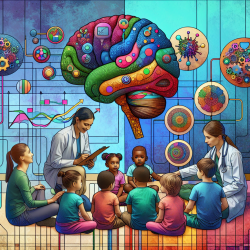Revolutionizing Diagnostics with Exome Sequencing Reanalysis
In the realm of clinical genetics, exome sequencing (ES) has emerged as a powerful tool, boasting a diagnostic rate between 25% and 58%. Yet, a significant portion of cases remain unsolved, leading researchers to explore the potential of exome reanalysis. A recent study, "A three-year follow-up study evaluating clinical utility of exome sequencing and diagnostic potential of reanalysis," highlights the transformative impact of revisiting previously inconclusive genetic data.
The Power of Exome Reanalysis
Conducted over three years, this study reevaluated 46 undiagnosed cases from an initial cohort, leading to 12 new diagnoses. This boosted the diagnostic yield from 41% to at least 53%, illustrating a 12% increase in the detection rate. The findings emphasize the value of exome reanalysis, particularly in pediatric cases where early diagnosis can significantly alter clinical management and outcomes.
Clinical Implications and Cost Savings
Beyond improving diagnostic rates, the study revealed substantial changes in clinical management for 72.2% of individuals, with positive clinical outcomes observed in 11% of cases. These changes not only enhanced patient care but also resulted in annual healthcare cost savings of approximately USD 19,497. This underscores the economic benefits of integrating regular exome reanalysis into clinical practice.
Why Practitioners Should Consider Exome Reanalysis
- Enhanced Diagnostic Yield: Reanalysis can uncover new diagnoses by leveraging updated genetic knowledge and improved sequencing technologies.
- Improved Patient Outcomes: Timely and accurate diagnoses enable tailored treatment plans, improving long-term health outcomes.
- Cost-Effective: By preventing unnecessary treatments and hospitalizations, exome reanalysis can reduce healthcare costs significantly.
Encouraging Further Research
While the study highlights the benefits of exome reanalysis, it also calls for further research to optimize reanalysis protocols and explore its potential in broader clinical settings. Practitioners are encouraged to stay informed about advancements in genetic diagnostics and consider participating in research initiatives that contribute to this evolving field.
To read the original research paper, please follow this link: A three-year follow-up study evaluating clinical utility of exome sequencing and diagnostic potential of reanalysis.










